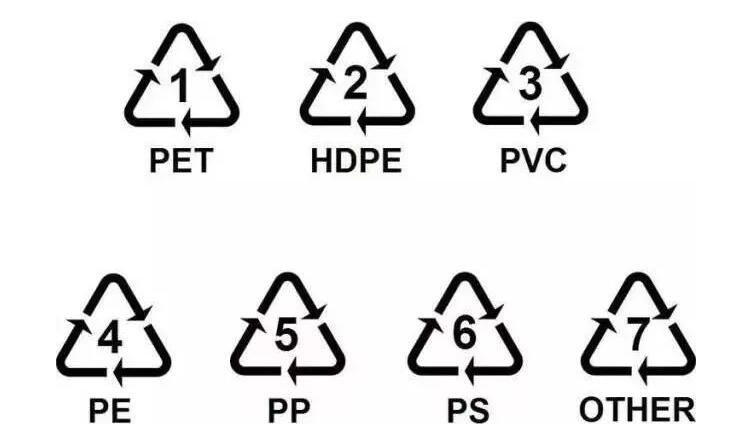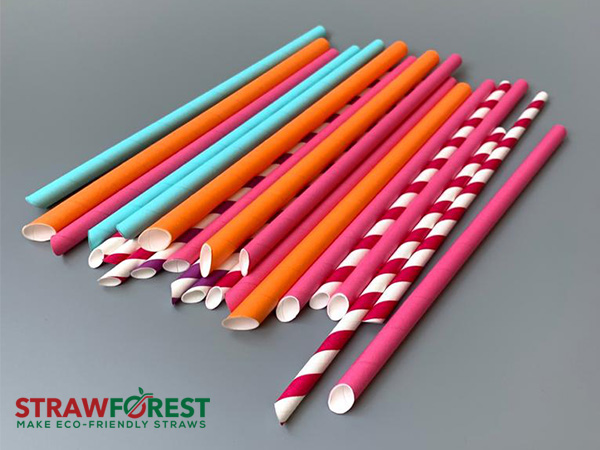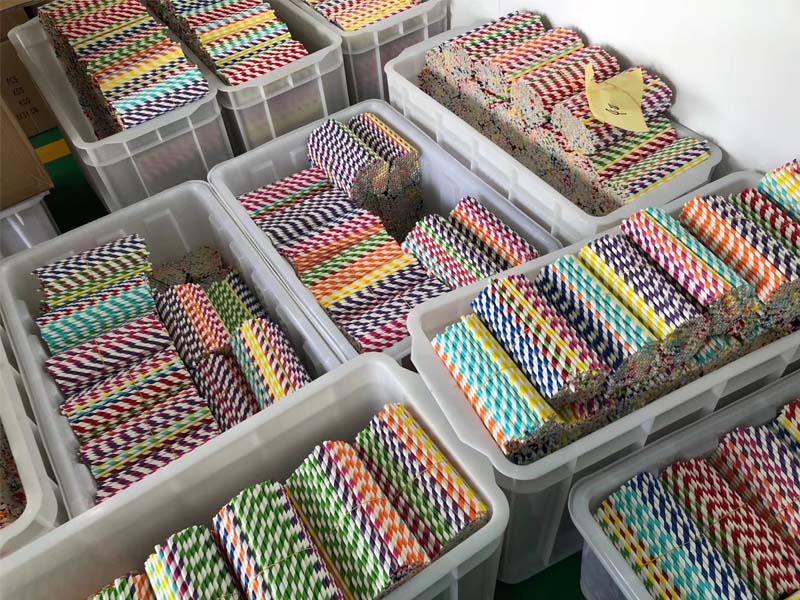How to tell the difference between different plastic products?
In fact, each plastic container has an “identity card” , usually at the bottom of the plastic container. There are 1-7 numbers in the triangle, and each number represents a sort of plastic.
1. PET(Polyester)
The most common containers made of this material are mineral water bottles, carbonated beverage bottles, etc…
Heat-resistant to 70 °C deformation, there will be harmful substances melting out. And after repeated use for more than 10 months, may release carcinogens. Therefore, this type of plastic cannot be placed in the car in for a long time, do not fill wine, oil and other substances.
2. HDPE (High-density polyethylene)
Many dairy products (including Yakult) are made with this material. It is also often made into white medicine bottles, cooking oil, cleaning, bath products containers. Most of the plastic bags commonly used in shopping malls are made of this material.
Because of the properties of poor cleaning, easy to produce residues and become a hotbed of bacteria, so do not recommend repeated use.
This material is used to make raincoats, plastic film, plastic boxes, and other objects.
Excellent plasticity, low price, so it is widely used. Only heat resistance 81 °C. Is easy to produce the bad material under high temperature. This material is difficult to clean, do not recycle. Often contain BISPHENOL A and plasticizer ingredients, do not use it for drinks and food.
4.PE(POLYETHYLENE)
Most common plastic bags, plastic film, plastic film are such materials. Harmful substances produced under high temperature. It may cause breast cancer, birth defects, and other diseases when there are toxic substances come into the human body with food.
So, Saran wrap must not put into the microwave oven heating!
The plastic is often used to make juice bottles, microwave lunch boxes and the like.
It can withstand temperatures as high as 167 °C, is one of the few plastic boxes that can be placed in a microwave oven and can be reused.
However, some microwave dinner box, the box body is made of PP, but box cover is made of PE. Because PE cannot withstand high temperatures, it is recommended that the box cover should not be put into the microwave oven with heating.
The material is low in water absorption and is used to make building materials, toys, stationery, rollers, as well as cup boxes for drinks in fast food restaurants or disposable tableware, such as instant noodle boxes, fast food boxes.
When heated at high temperatures and exposed to acidic (such as orange juice) or alkaline substances, carcinogens can be broken down. So avoid using a fast food box to pack hot food, and don’t put it in the microwave.
7 Other
Other common plastic materials include PCs, which are used in most of the water bottles in stores. However, PC contains bisphenol A, easy to release toxic substances in high-temperature heating, so do not use for the heating, and also avoid direct sunlight.
PPSU materials are now often used in the production of milk bottles. Does Not Contain Bisphenol A, lightweight and resistant to falling, slightly yellow color, not easy to produce chemical toxins, can be heated by microwave
Another excellent material is Tritan Copolyester. Many wall breakers (like Vitamix) and baby products are made of this material. Resistant to 100 degrees above high temperature, does not contain bisphenol A, safe and non-toxic, transparent color, light anti-fall, is the high-end plastic products.



